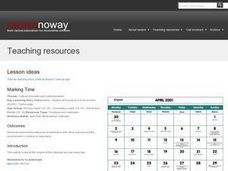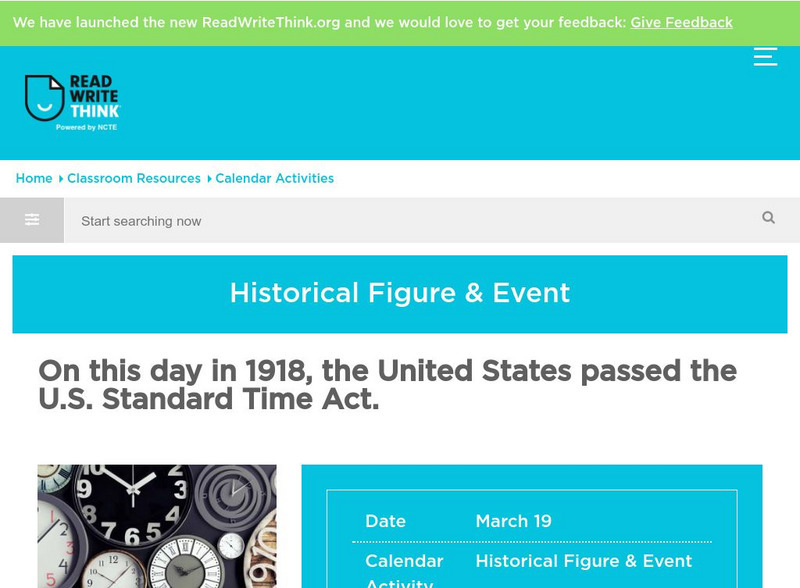Curated OER
Participants are challenged to create several different sorting groups for the set of images.
Students examine the influence of interaction with other cultures and the environment in relation to calendars. They also look at the origins of the calendar we use every day.
Curated OER
Mapping My Community
Ninth graders are introduced to GPS technology. They complete fieldwork as they visit a specific area of their community to identify and map types of land use in the surveyed area. They use the collected data to create a digital map.
Curated OER
Bones and Muscles
Third graders are introduced to bones as the body's means of support and protection. They research bone facts and conduct an experiment with chicken bones. They identify and observe involuntary muscles at work.
Curated OER
Speedball
Students work as a team in a game of Speedball. They are taught to value the benefits of physical activity as they investigate a new sport. Students successfully participate in a game of Speedball after participating in a drill that...
Curated OER
Electrical Engineers for a Day
Students build a robot out of a 3-¿¿ inch floppy disk drive, two floppy disks, and some other miscellaneous supplies. They apply information they gather about electrical circuits from a web-based circuit design program.
Curated OER
Who Invented It? When? Chinese Inventions: An Introductory Activity
Students use Robert Temple's "The Genius of Chins: 3,000 Years of Science, Discovery and Invention", to understand how much the Chinese have contributed with their scientific and technological ability.
Curated OER
What is an Estuary?
Students define the terms estuary and watershed. They conduct an experiment to determine the density differences between fresh and saltwater. They examine the salinity distribution of the Peconic Bay Estuary.
Curated OER
Making a Food Web and Learning About Ecosystems
Third graders examine the difference between a food web and food chain. They also examine the importance of the sun in a food web and food chain. Students understand what happens when you remove parts of the chain.
ReadWriteThink
Read Write Think: On This Day in 1918, the u.s. Passed the u.s. Standard Time Act
A classroom activity commemorating the 1918 Standard Time Act and aiding students in learning about differing time zones. Includes lesson plans, web links and an annotated bibliography. From March 19, 2007.
PBS
Pbs Teachers: Time Travel
Use this NOVA lesson to discuss the nature of time and the grandfather paradox. Examine time from different perspectives by plotting ages on a timeline, estimating how long a minute is and imagining going back in time to change something...
Harvard University
Harvard Smithsonian: Everyday Classroom Tools
The focus of this series of lessons is to engage students in an exploration of the world around them. The emphasis is on inquiry as students learn about the earth, sun, light, shapes and more.












